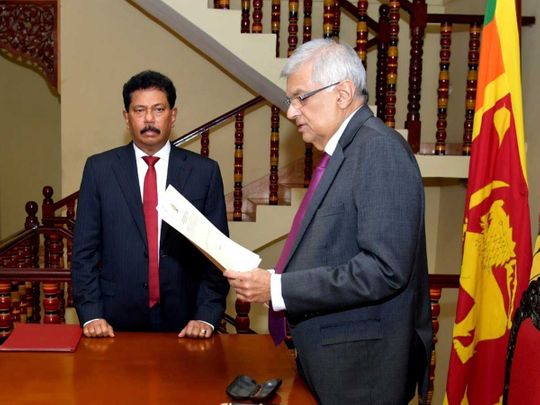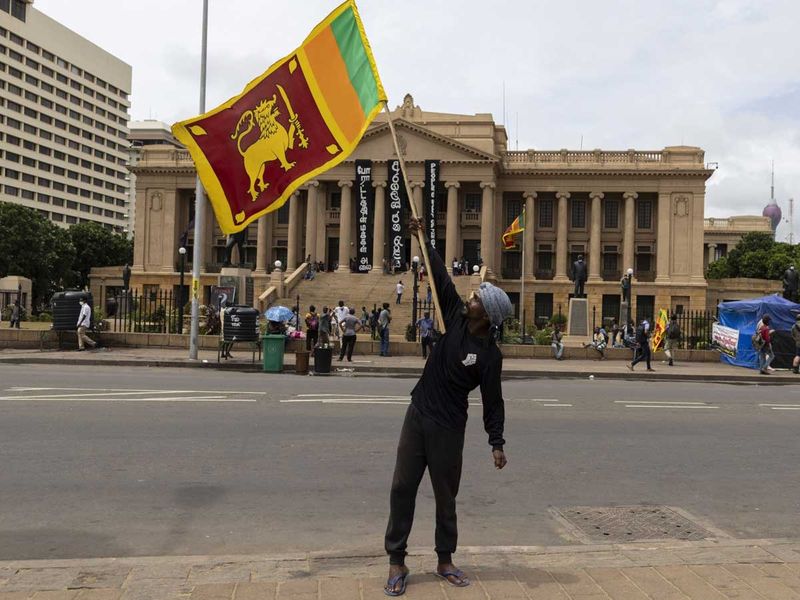
The political situation remains murky in Sri Lanka even after the departure of President Gotabaya Rajapaksa. The president fled the country without formally resigning, and the prime minister was sworn in as the acting president according to the constitution. A state of emergency and curfew has been imposed in the country. Prime Minister Ranil Wickremesinghe himself faces public anger who, defying curfew, continues to demonstrate for his ouster.
What led Sri Lanka to this mess? Years of misrule by the revolving door politicians and the dominance of the Rajapaksa family brought the country to its knees.
After the civil war ended in 2009, then President Mahinda Rajapaksa (older brother of Gotabaya) opted for massive infrastructure development that required foreign borrowings. Insufficient attention was paid to producing tradable goods to generate funds. To pay back loans, the government dipped into its foreign exchange reserves and commercial borrowings, which increased from 7 per cent in 2006 to 55 per cent of the GDP in 2019.
Heavily dependent on tourism, the Covid-19 pandemic hit Sri Lanka hard, significantly denting its foreign exchange earnings. The tourism industry’s contribution to GDP fell from 5.6 per cent in 2018 to 0.8 per cent in 2020.
‘Gift tax cuts’
To win the parliamentary majority, President Gotabya Rajapaksa made the shortsighted decision to “gift tax cuts” in 2019, which brought the government revenue share of GDP from 12.6 per cent in 2019 to 9.1 per cent in 2020. In another ill-conceived move, the government banned the import and use of fertiliser, suggesting the use of manure, which led to the sudden drop in crop yields. Sri Lanka was left facing a situation where even staples like rice had to be imported.
In the wake of economic mismanagement, the central bank report for 2020 pointed out the contraction of the economy by 3.6 per cent in real terms in 2020 as the “deepest recession since independence [in 1948]”. Many experts mooted the idea of going to the IMF, which Sri Lanka had done 16 times since independence in 1948, but the political leadership did not heed the advice. The finance ministry was headed by the president’s brother Basil Rajapaksa.

Just as the tourists appeared to be returning, the Ukraine war has hit the commodity and energy prices, dealing a blow to a cash-strapped country like Sri Lanka.
In the meantime, the foreign currency reserves that were $9 billion in April 2018 plummeted to only $1.8 billion in June 2022, sufficient for only 1.2 months of imports. As reserves depleted, the local currency lost its value. Caught in a debt trap, Sri Lanka found it difficult to raise revenue.
In early April, Sri Lanka formally announced it was defaulting on its $51 billion foreign debt. With no money for essentials like food, fuel, power and medicines, the public had had enough and came out on the streets.
Personal estate
The Rajapaksas have run the country like a personal estate. Mahinda made Gotabaya the defence secretary overseeing the civil war. Other brothers and other relatives held senior positions. Gotabaya, after he was elected president in 2019, made Mahinda the prime minister; two other brothers and a nephew were ministers. Several other family members held positions in the government. The Sri Lankan government was controlled by a few families, and it was crony capitalism at its worst.
Since Ranil Wickremesinghe became prime minister, Sri Lanka has had one staff-level talks with the IMF, and that’s now stalled due to the political impasse.
As the Sri Lanka crisis unfolds, parallels are drawn with the precarious financial situation in Pakistan — a country that has gone to the IMF 22 times since 1958. Pakistan’s negotiations to restart the IMF programme signed in 2019 are held up.
In the meantime, Pakistan’s foreign exchange reserves are fast depleting. Pakistan’s public sector must pay back roughly $49.23 billion during the next five years. By the current trends, Pakistan borrows to pay back previous outstanding loans. Pakistan has built up an external debt of nearly $130 billion. For the current financial year, Pakistan needs $23 billion for its debt servicing, and the debt to GDP ratio now hovers around 9 per cent.
Political leadership in Sri Lanka and Pakistan should take hard decisions and correct the course of the economy.
There is a lot to learn from Sri Lanka’s experience.
— Sajjad Ashraf served as an adjunct professor at the Lee Kuan Yew School of Public Policy, National University of Singapore from 2009 to 2017. He was a member of the Pakistan Foreign Service from 1973 to 2008 and served as ambassador to several countries.







